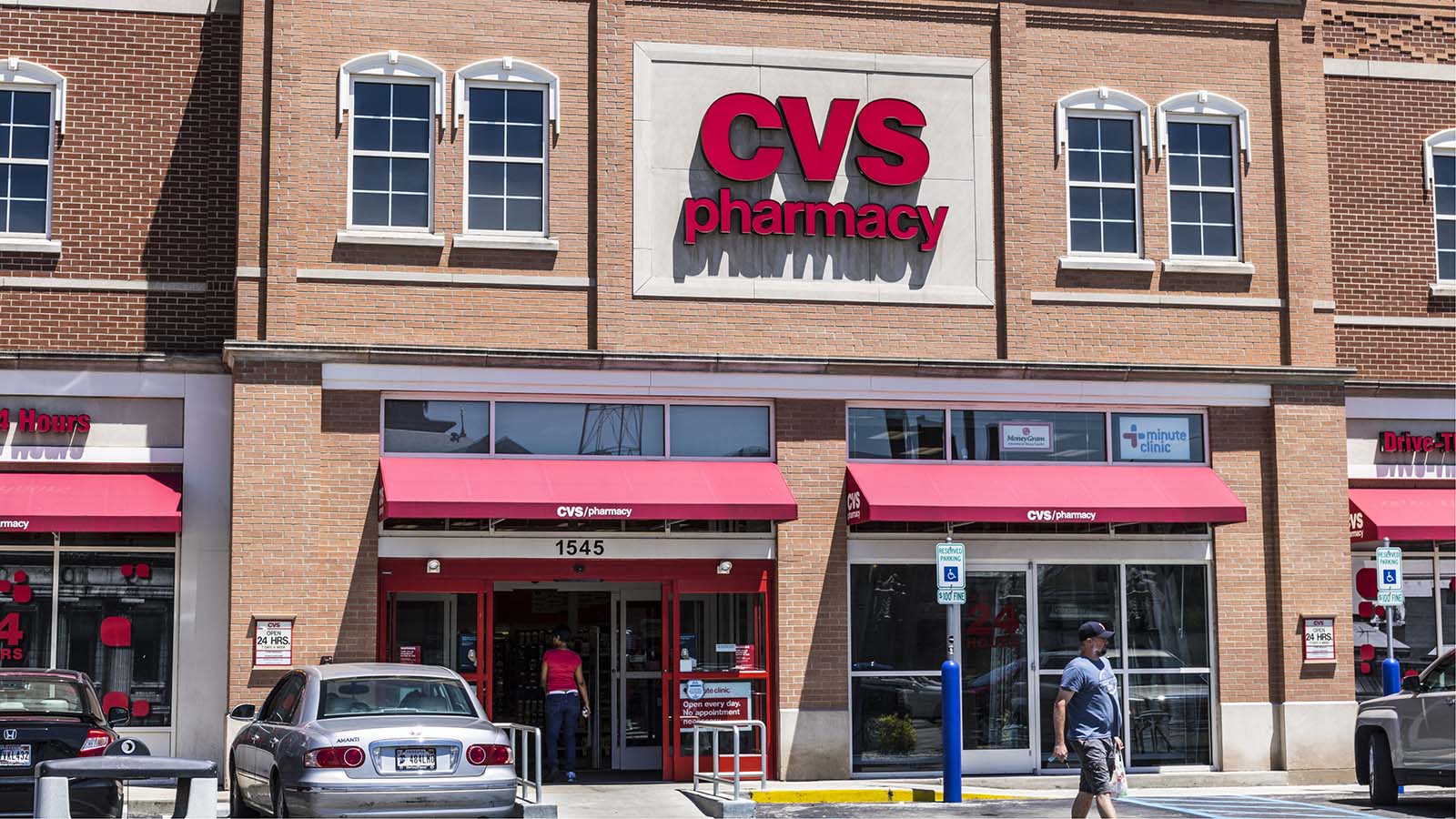January has seen many stocks, as well as broader indices, continue the year-end rally. However, CVS Health (NYSE:CVS), the integrated pharmacy healthcare company, is not one of these stocks, as YTD CVS stock is down about 6%.

The company is expected to report Q4 earnings Feb 12. As we go through another earnings season, markets face uncertainty, especially as to how global health developments regarding the recent coronavirus will play out.
Therefore today, I’d like to discuss the outlook for CVS. Long-term, I am quite bullish as the group increases its reach in the healthcare industry. However, in the coming weeks, I’m expecting some further profit-taking. Such a potential drop in the stock price would give long-term investors a better entry point, too.
CVS Earnings Report Expectations
When the group reported Q3 earnings on Nov. 6, quarterly revenue increased 36.5% YoY and profit came in higher-than-expected. Net profits rose 10% over the prior year.
When CVS reports Q4 earnings, investors will analyze its three main segments: Pharmacy Services (over 70% of sales come from it); Retail/LTC; Health Care Benefits (recently established).
The Pharmacy Services segment provides pharmacy benefit management (PBM) services to employers, health plans, and government employee groups as well as government-sponsored programs.
Last quarter, revenue increased 6.4% YoY, mostly due to brand name drug price inflation as well as increased total pharmacy claims volume.
The Retail/LTC segment fulfills prescriptions for medications, provides patient care programs, sells general merchandise, and offers healthcare services through walk-in clinics. In Q3, revenue increased by 2.9% YoY.
In 2018, CVS completed the acquisition of Aetna, the third-largest U.S. health insurance company by membership and revenue. Afterward, CVS established a new Health Care Benefits segment, which would be the equivalent of the former Aetna Health Care segment.
This segment now provides a full range of insured and self-insured medical, pharmacy, dental and behavioral health products and services. Investors noted that this segment was a catalyst behind revenue growth.
Analysts would like to see growth in revenue and operating income in each of these segments in February.
Finally, despite the strength in the recent earnings results, many investors are still wondering whether CVS overpaid in the $69 billion Aetna deal. The acquisition has added a substantial pile of debt to the company’s balance sheet. Therefore, potential investors may want to pay close attention to the debt levels in Q4 earnings results.
CVS Stock’s Ecosystem is Growing
Healthcare is an ecosystem. Competition in the retail pharmacy business is fierce and e-commerce is changing how businesses operate and consumers shop.
CVS is facing competition from other big players, such as Walgreens Boots Alliance (NYSE:WBA) Rite Aid (NYSE:RAD), and Walmart (NYSE:WMT), along with Amazon (NASDAQ:AMZN) following its acquisition of PillPack.
Management realizes the competitive forces in the industry and is committed to be ahead of the game. The company provides regular updates on how its ecosystem is growing. Currently, it has about
- 10,000 retail location across the country,
- 23 million medical benefits members,
- 1,100 Minute Clinic locations.
Investors are pleased that management is also replacing a good number of its lower-margin retail floor space with higher-margin HealthHUBs. They are expected to evolve more into wellness and healthcare service centers.
Recent research led by Kyle Cornell at College of Pharmacy University of Kentucky highlights that “chain pharmacies have begun investing in digital health in a variety of ways. Walgreens, CVS, and Rite Aid all have smartphone apps with more advanced features.”
In other words, management understands that CVS customers are also patients, and that is crucial for the company to appreciate them more holistically.
Longer-term, I’m also encouraged by two valuation metrics. First of all, its forward P/E stands at 9.9. Historically, this is a cheap ratio both for the company and the industry.
Secondly, its current price-sales ratio is only 0.36. Analysts prefer a low P/S multiple, ideally below 1x. However, a P/S number between 1x and 2x is more common. To put the metric into perspective, the S&P 500’s average price-sales ratio is 2.3x. In other words, CVS stock price could go up a lot higher before these two metrics become over stretched.
So Should You Buy CVS Stock Now?
The coming year will likely see investors value the purchase of Aetna fully and price in the growth potential of CVS stock. And in a few years, CVS will likely become a one-stop-shop for non-emergency daily healthcare needs of many consumers.
It is making strategic decisions that will shape its future. It is increasingly offering services that may reduce the need for visits to hospitals or doctors, especially for holders of its health insurance plans. The group’s evolving business model will require at least several more quarters to take shape. However, I’m bullish on the long-term potential of the company.
Yet in the short-run, there is likely to be some price weakness in the shares.
On Nov. 25, the share price hit a 52-week high of $77.03. Now, they are hovering around $70. If there is further selling pressure in the coming days, a test of $67.5 or a move even lower toward $65 could be likely.
If you already own CVS stock, you might want to stay the course and hold onto your position.
Or you may also consider opening a covered call position in conjunction with going long on CVS shares.
Selling covered calls on dividend-paying stocks, like CVS, would enable long-term investors to weather further volatility as well as create extra portfolio yield. For example, you may want to hedge your long stock position with a covered call that expires on Feb. 21. It would offer a degree of downside protection while allowing you to participate in a potential up move. Long-term shareholders would also enjoy a current dividend yield of 2.8%.
In summary, CVS stock can be a great pillar for many long-term portfolios.
As of this writing, the author did not hold a position in any of the aforementioned securities.
